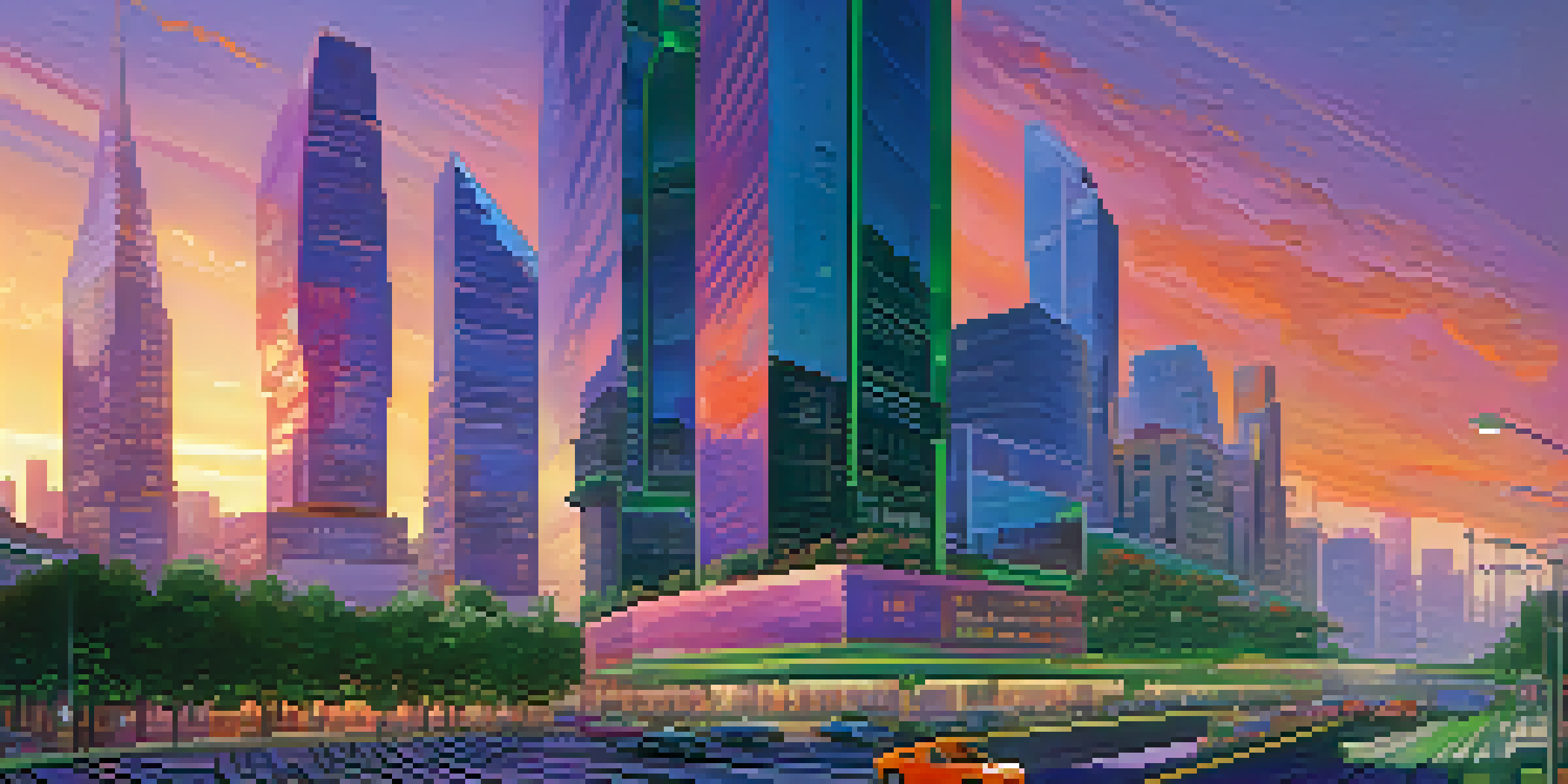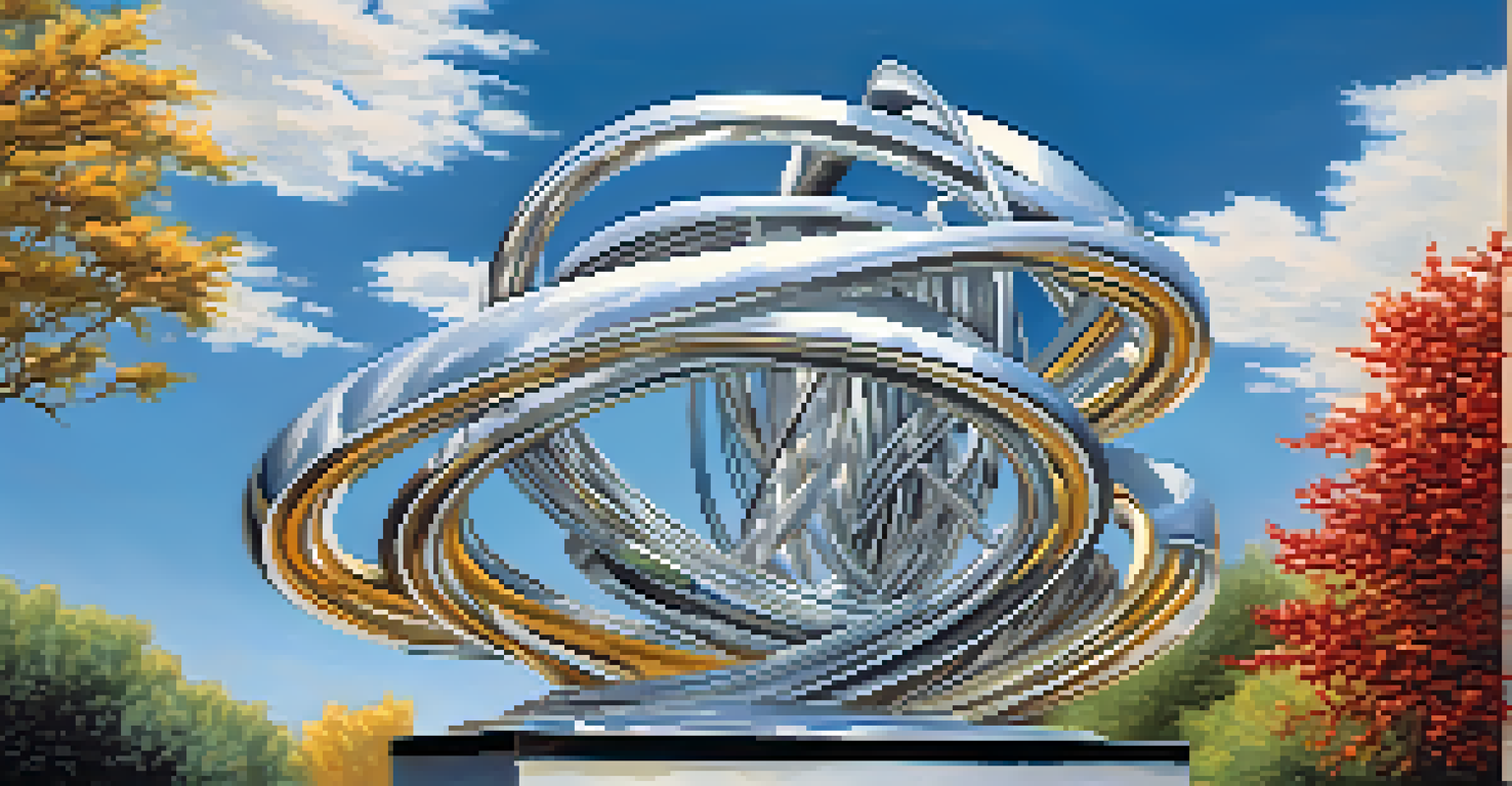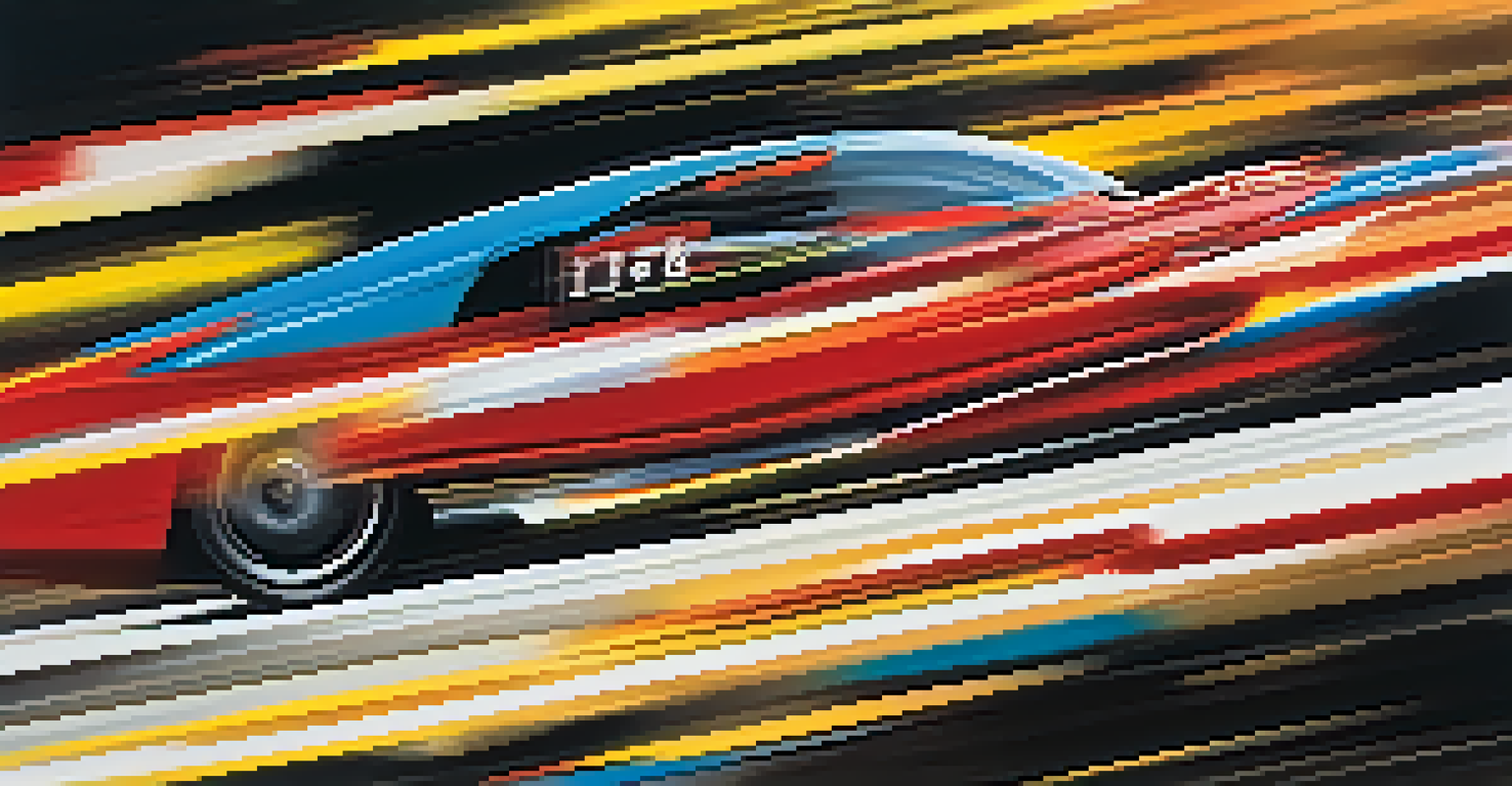Key Artists of the Futurism Movement: A Closer Look

Introduction to the Futurism Movement
Futurism emerged in the early 20th century, primarily in Italy, as a cultural movement that celebrated modernity and technology. Artists sought to capture the energy and dynamism of contemporary life, often depicting speed, movement, and the industrial landscape. This revolutionary perspective was a stark departure from traditional art forms, aiming to break free from the past and embrace the future.
The past is not dead; it is living in us, and we are living in it.
The Futurist Manifesto, published by Filippo Tommaso Marinetti in 1909, laid the groundwork for the movement. It called for the rejection of historical influences in favor of innovation and change. This manifesto resonated with many artists and intellectuals, sparking a wave of creative exploration.
As we delve into the key figures of the Futurism movement, we will uncover how their unique styles and philosophies shaped this vibrant period in art history. From painting to sculpture and literature, these artists left a lasting legacy that continues to influence contemporary art.
Filippo Tommaso Marinetti: The Visionary Leader
Filippo Tommaso Marinetti was not only a poet but also the chief architect of the Futurism movement. His passion for speed and technology was evident in both his writings and his artistic vision. Marinetti's work often emphasized the power of machines and the beauty of modern life, making him a pivotal figure in this avant-garde movement.

In his 1909 manifesto, Marinetti boldly declared that a new art form was necessary to reflect the experiences of the modern era. He encouraged artists to abandon traditional techniques and embrace the chaotic energy of contemporary life. This radical approach inspired countless artists to experiment and innovate.
Futurism Celebrates Modernity
The Futurism movement emerged in the early 20th century, emphasizing the beauty of technology and the dynamic energy of contemporary life.
Beyond his manifestos, Marinetti's poetry captured the essence of Futurism's ethos. His works are filled with vivid imagery and a sense of urgency, inviting readers to experience the thrill of the modern world. Marinetti's influence on the movement is undeniable, as he set the stage for future artists to explore new horizons.
Umberto Boccioni: The Master of Movement
Umberto Boccioni is often regarded as the most significant painter of the Futurism movement. His works, such as 'The City Rises' and 'Unique Forms of Continuity in Space,' exemplify the Futurist fascination with movement and dynamic forms. Boccioni sought to convey the energy of life through his innovative use of color and form.
Art is the most beautiful of all lies.
His style combined elements of Impressionism and Cubism, resulting in a unique approach that emphasized the fluidity of movement. Boccioni believed that art should not only represent reality but also convey the sensations experienced in that reality. This philosophy drove him to create pieces that felt alive and vibrant.
Tragically, Boccioni's life was cut short during World War I, yet his contributions to Futurism endure. His exploration of space and movement has influenced generations of artists, making him a key figure in the evolution of modern art. Boccioni's legacy is a testament to the transformative power of creativity.
Giacomo Balla: The Colorful Innovator
Giacomo Balla was a pioneering figure in Futurism, known for his vibrant use of color and innovative techniques. His works often focused on the interplay of light and movement, capturing the essence of speed. Balla's painting 'Dynamism of a Dog on a Leash' is a prime example of his ability to depict motion through color and form.
Balla was deeply interested in the scientific aspects of light and movement, which influenced his artistic practice. He experimented with new techniques, such as using repeated patterns to illustrate the sensation of speed. This approach not only enhanced the visual impact of his work but also aligned with the Futurist belief in the beauty of modernity.
Key Figures Shaped Futurism
Artists like Marinetti, Boccioni, and Balla played pivotal roles in developing Futurism's innovative styles and philosophies.
Through his art, Balla sought to convey the excitement and energy of the modern world. His contributions to the movement helped shape the visual language of Futurism, making him a crucial figure in this artistic revolution. Balla's legacy is evident in the way contemporary artists continue to explore the relationship between color and motion.
Carlo Carrà: The Poet of the Machine
Carlo Carrà was another key artist in the Futurism movement, celebrated for his ability to blend poetry and visual art. His works often depicted the relationship between humans and machines, emphasizing the transformative power of technology. Carrà's painting 'The Funeral of the Anarchist Galli' showcases his unique ability to convey emotion through the lens of modernity.
Carrà believed that art should reflect the realities of contemporary life, including the impact of industrialization. His exploration of themes such as war and urban life resonated with the Futurist ideology, making him an essential figure in the movement. His style evolved over time, incorporating elements of Cubism and Metaphysical painting.
Through his art, Carrà captured the tension between tradition and modernity, inviting viewers to reflect on the changing world around them. His contributions to Futurism helped to broaden its scope, allowing for a deeper exploration of the human experience in an industrial age. Carrà's influence remains significant in discussions of modern art.
Antonio Sant'Elia: The Architect of Futurism
Antonio Sant'Elia was a visionary architect whose work embodied the principles of Futurism. His designs celebrated the modern city and its potential for innovation and progress. Sant'Elia's manifesto, 'Futurist Architecture,' proposed bold ideas for urban planning and design, emphasizing functionality and dynamism.
His architectural style was characterized by sharp angles, bold forms, and a focus on the integration of technology and nature. Sant'Elia envisioned cities that would reflect the speed and energy of modern life, incorporating elements that would enhance the urban experience. His sketches and plans showcased a futuristic vision that was ahead of his time.
Legacy Influences Modern Art
Futurism's radical ideas and themes of speed and technology continue to inspire contemporary artists across various disciplines.
Although Sant'Elia's life was cut short by World War I, his ideas have had a lasting impact on architecture and urban design. His commitment to creating spaces that resonate with the spirit of the age continues to inspire architects today. Sant'Elia's legacy is a reminder of the power of architecture to shape our experience of the world.
The Legacy of the Futurism Movement
The Futurism movement has left an indelible mark on the art world, influencing various disciplines and styles. Its emphasis on modernity, technology, and the dynamic nature of life resonates with contemporary artists. The movement's radical ideas challenged traditional notions of art and paved the way for future avant-garde movements, such as Dadaism and Surrealism.
Today, the themes of Futurism continue to be explored in various art forms, from visual art to literature and design. Artists draw inspiration from the movement's celebration of speed and technology, creating works that reflect the complexities of modern life. This ongoing dialogue between the past and present highlights the movement's enduring relevance.

By studying the key artists of Futurism, we gain insight into the transformative power of art and its ability to reflect societal changes. The legacy of Futurism serves as a reminder that creativity knows no bounds and can inspire generations to come. As we look to the future, the spirit of Futurism continues to encourage innovation and exploration in the arts.